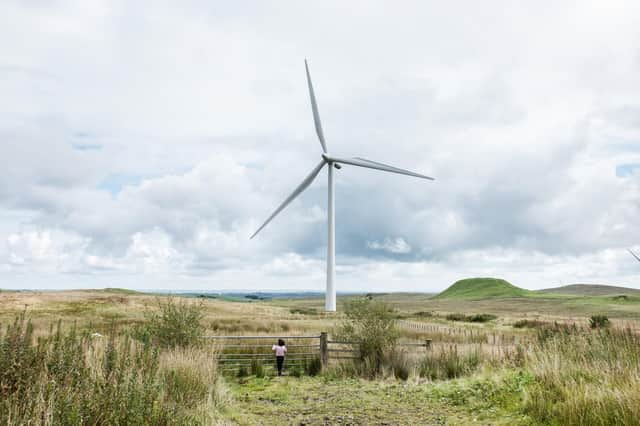Stronger action needed over onshore windfarms - comment


The recognition of a climate emergency and adoption of a “net zero” target means more change is essential and many more onshore wind farms are needed in the energy mix. Also, unlike other types of development, permissions for windfarms are time-limited so that at the end of a specified period the turbines have to be removed. So, in coming years, much of the current fleet will need replaced.
Happily, technology has advanced and the new generation of turbines is larger and more efficient. More output can be produced with fewer turbines. If Scotland is to achieve carbon neutrality, the benefits of such turbines cannot be ignored.
Advertisement
Hide AdAdvertisement
Hide AdUnfortunately, the planning policy framework is lagging behind. The current policy framework does not properly reflect what Scotland now urgently needs to do to address the climate emergency. It is therefore of great concern that the Scottish Government’s draft National Planning Framework 4, (NPF4) has been delayed from September 2020 until autumn 2021.


The wind industry has long been making the case that, to rise to the zero carbon challenge, planning policy must spell out a more positive, less caveated position, which recognises the need to optimise suitable sites with the latest technology. Therefore, the delay to NPF4 is significant. We could be in a vacuum for several years awaiting policy to reflect the new world order.
Meantime, investors and operators are faced with convincing planning authorities of the merits of more efficient turbines case by case. In the absence of clear and up-to-date national policy, the same objections are raised repeatedly at local level. Many, including Scottish Natural Heritage for whom the climate emergency must also be a key concern, believe that – if permitted at all – turbines should reflect what has gone before.
But the world has moved on and repetition is not sustainable. Worse, there is growing evidence of some local authorities trying to limit the scope for turbines in their area, by seeking to stack the deck against any new wind farm developments via local planning policy. Local Development Plans are supposed to help address the climate emergency and to reflect national policy.
Greater need
Those opposed to deployment of next-generation turbines may point to previous successes in achieving renewables targets, and Scotland has done well in delivering a sizeable gigawatt capacity of onshore wind. But it has taken a long time, and the need for more is greater than ever. Moreover, the sites developed to date were (in relative terms) “easier” and delivered with the benefit of a favourable subsidy regime, compared to those that now need to be brought into production with little or no subsidy.
It would be wrong to rest on laurels and take comfort from what has been done. We need to deliver the same again and more, at lower cost, faster. For those reasons, industry has been calling for an interim policy or ministerial statement to provide clarity and underline the enhanced role of onshore wind in a net zero world, including the need to embrace taller turbines. Alas, instead the Scottish Government has begun consulting on proposals to withdraw the current policy presumption in favour of sustainable development. This is at odds with the net zero targets.
A planning policy vacuum affecting the next generation of onshore windfarms could blow Scotland’s drive to lead the world in achieving carbon-free status off course. The Scottish Government seems to be seeking to please all concerned, and adopting opaque policy positions. A stronger, clearer message is needed – that more onshore windfarms comprising taller turbines are key to meeting new targets.
Gary McGovern, partner and planning specialist at Pinsent Masons
A message from the Editor:
Advertisement
Hide AdAdvertisement
Hide AdThank you for reading this story on our website. While I have your attention, I also have an important request to make of you.
The dramatic events of 2020 are having a major impact on many of our advertisers - and consequently the revenue we receive. We are now more reliant than ever on you taking out a digital subscription to support our journalism.
Subscribe to scotsman.com and enjoy unlimited access to Scottish news and information online and on our app. Visit https://www.scotsman.com/subscriptions now to sign up.
By supporting us, we are able to support you in providing trusted, fact-checked content for this website.
Joy Yates
Editorial Director
Comments
Want to join the conversation? Please or to comment on this article.